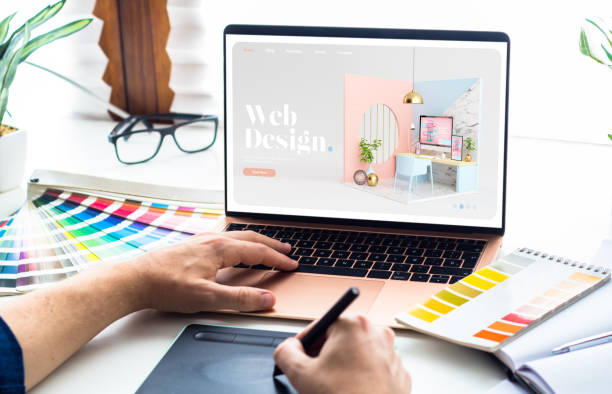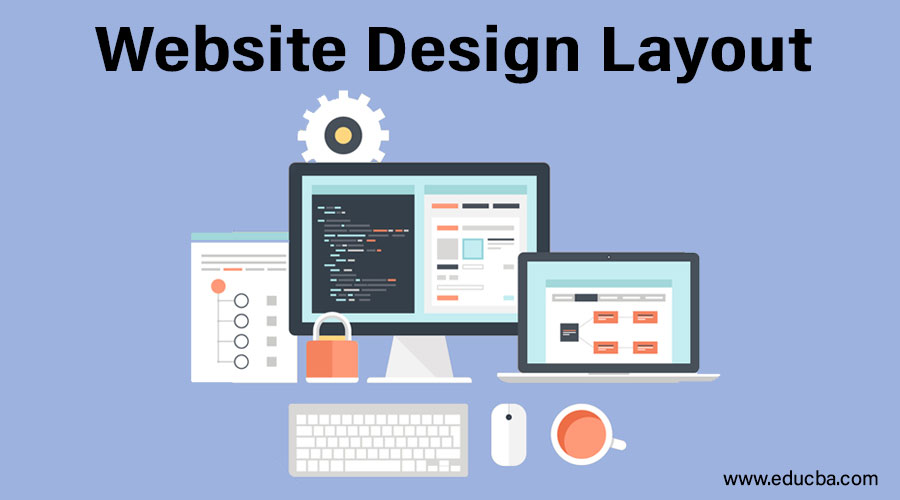Website Design in copyright: Crafting Custom Websites for Every Business
Website Design in copyright: Crafting Custom Websites for Every Business
Blog Article
Achieve Online Success With User-Friendly Internet Site Style
In the increasingly affordable digital landscape, the layout of an internet site can be a pivotal consider determining a company's success. User-friendly design not just improves the overall individual experience yet also influences crucial metrics such as engagement, retention, and conversion prices. By focusing on user-friendly navigation and ease of access, companies can cultivate a much more inclusive environment that attract a broader target market. Nevertheless, understanding the specific principles and features that add to efficient design requires a closer assessment of current trends and finest methods, which might disclose possibilities for substantial improvement.
Importance of Individual Experience
Individual experience (UX) plays an essential duty in the success of a web site, as it straight influences user fulfillment and engagement. A positive UX guarantees that visitors can browse the website effortlessly, gain access to details promptly, and complete preferred activities, such as purchasing or authorizing up for an e-newsletter, without stress.
In an electronic landscape where competition is intense, an internet site that prioritizes UX can dramatically improve brand name loyalty and retention. Customers are most likely to return to a site that uses a seamless experience, producing a cycle of repeat check outs and enhanced customer life time worth. Reliable UX design can minimize bounce rates, as users are less inclined to leave a site that satisfies their requirements efficiently.
In addition, search engines increasingly take into consideration user experience elements when ranking websites. Hence, spending in individual experience is important for accomplishing lasting success in the electronic industry.
Key Concepts of User-Friendly Design
An effective easy to use design depends upon a number of key concepts that improve usability and accessibility. Is simplicity; a clutter-free user interface makes it possible for users to browse effortlessly, minimizing cognitive load. This principle highlights the value of succinct and clear content, permitting individuals to find info promptly without unnecessary interruptions.
Consistency is one more vital element. Consistent use of shades, layouts, and typefaces cultivates knowledge and builds count on. Individuals ought to feel comfy as they discover various sections of the internet site, knowing that comparable aspects signify related performances.
Reliable typography also plays an important role in straightforward design. Understandable fonts, proper sizes, and appropriate spacing make sure that web content is easily readable throughout different gadgets. Including instinctive visual hierarchies aids users recognize crucial information and actions at a glance.

Essential Features for Navigating
Effective navigating is important for any type of user-friendly site, as it straight impacts the general individual experience. A well-structured navigation system allows users to situate details here are the findings quickly and efficiently, minimizing aggravation and raising engagement.
One necessary feature is a clear and intuitive food selection that classifies content logically - website design copyright. This menu must be conveniently obtainable from every web page, commonly positioned on top or on the side of the internet site. Furthermore, including breadcrumb navigating aids customers comprehend their location within the site hierarchy and makes it less complicated to backtrack
Search functionality is another important component, allowing customers to locate certain material without sifting through several web pages. This attribute needs to be plainly shown and receptive to variations in input.
In addition, a mobile-responsive style makes certain that navigation remains smooth throughout tools. As mobile use remains to increase, menus should adjust to various display sizes without compromising functionality.
Last but not least, aesthetic cues such as highlighting the energetic web page and utilizing hover impacts can boost customer communication. By incorporating these essential attributes, internet site developers can produce a navigational experience that is not only easy to use yet additionally motivates expedition and retention.
Access Considerations
Availability factors to consider are integral to developing an easy to use website that provides to all people, no matter their abilities or handicaps (website design copyright). Internet sites need to be designed to make sure that users with visual, auditory, cognitive, or motor disabilities can engage with material successfully. This starts with adherence to the Web Content Availability Standards (WCAG), which give a structure for making electronic material extra available
Trick practices consist of using descriptive different text for photos, guaranteeing shade contrast proportions meet access criteria, and offering subtitles for multimedia aspects. Furthermore, the navigating must be user-friendly, allowing individuals to tab with links and interactive components quickly. Executing key-board navigation is critical for those incapable to make use of a mouse.
Additionally, concise and clear language improves understanding for individuals with cognitive limitations. Forms must be straightforward, with labels and guidelines that are easy to comprehend. Regular ease of access screening, consisting of user responses from people with specials needs, can aid identify barriers and improve usability.
Measuring Layout Success

Individual comments surveys and usability screening are important this page in analyzing the efficiency of design aspects. These methods allow designers to collect straight input from individuals, identifying pain factors and locations for improvement. Furthermore, tracking heatmaps can disclose where users click most regularly, assisting to notify this layout modifications and material prioritization.
Google Analytics can track user behavior, disclosing patterns that indicate whether the design is helping with or preventing the user journey. Ultimately, an effective internet site design not only meets organization objectives however likewise fosters a pleasurable and smooth customer experience, driving interaction and commitment over time.
Conclusion
To conclude, straightforward website style is paramount for accomplishing online success. Prioritizing individual experience via simplicity, instinctive navigation, and effective feedback systems not just boosts customer engagement and complete satisfaction yet also fosters brand loyalty. Including vital navigation features and access factors to consider additionally ensures that all customers can efficiently connect with the site. Eventually, determining design success supplies useful insights that assist continual enhancement, strengthening a strong online existence in a competitive digital landscape.
Web sites have to be made to guarantee that individuals with aesthetic, acoustic, cognitive, or motor impairments can engage with material successfully.Determining style success includes assessing how efficiently an internet site satisfies its desired objectives while giving a positive customer experience. Google Analytics can track user habits, exposing patterns that suggest whether the layout is hindering the user or helping with journey. Ultimately, an effective web site style not only fulfills business goals yet also fosters a seamless and satisfying customer experience, driving interaction and loyalty over time. Prioritizing customer experience with simplicity, instinctive navigation, and efficient comments devices not only improves individual involvement and contentment yet additionally fosters brand loyalty.
Report this page